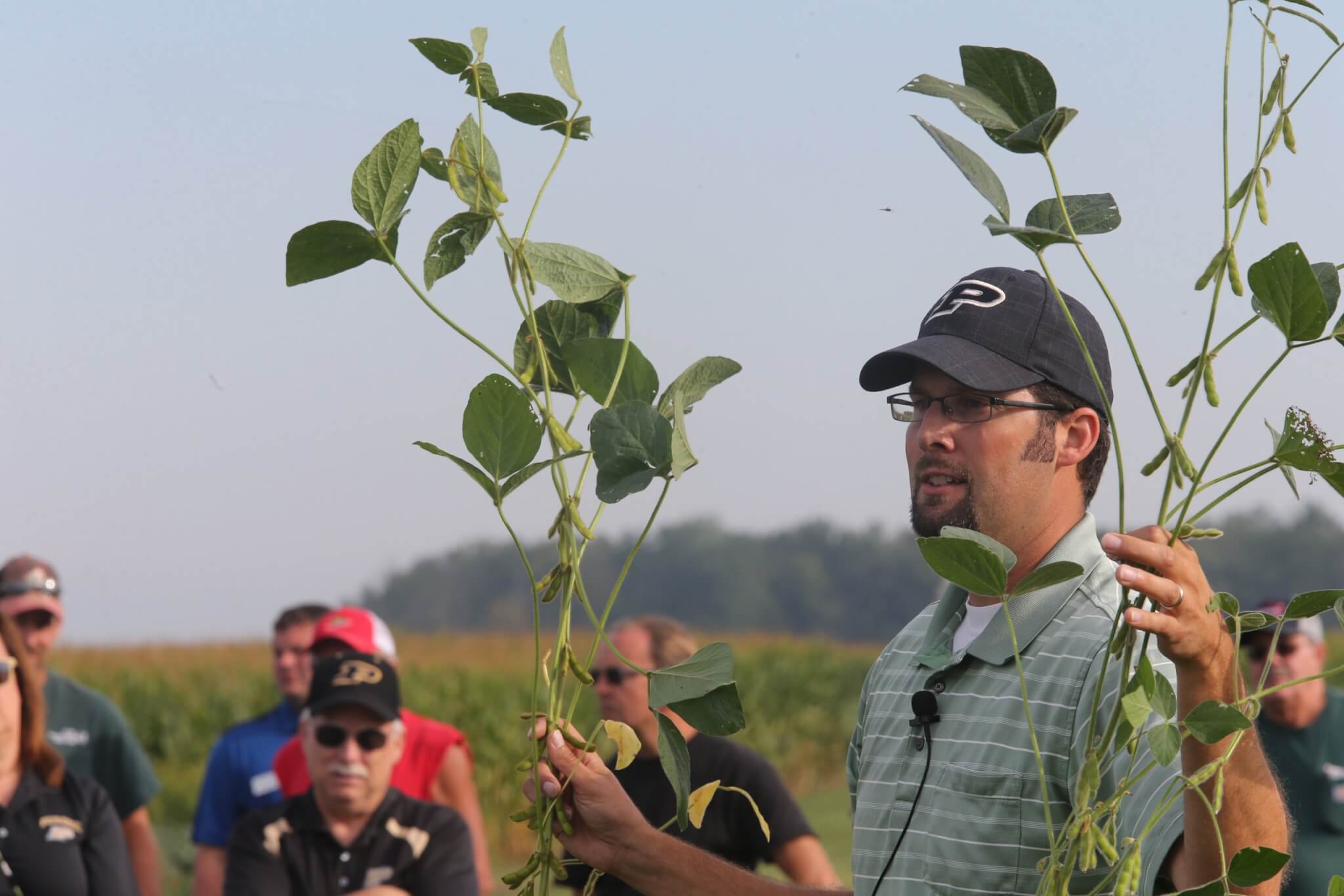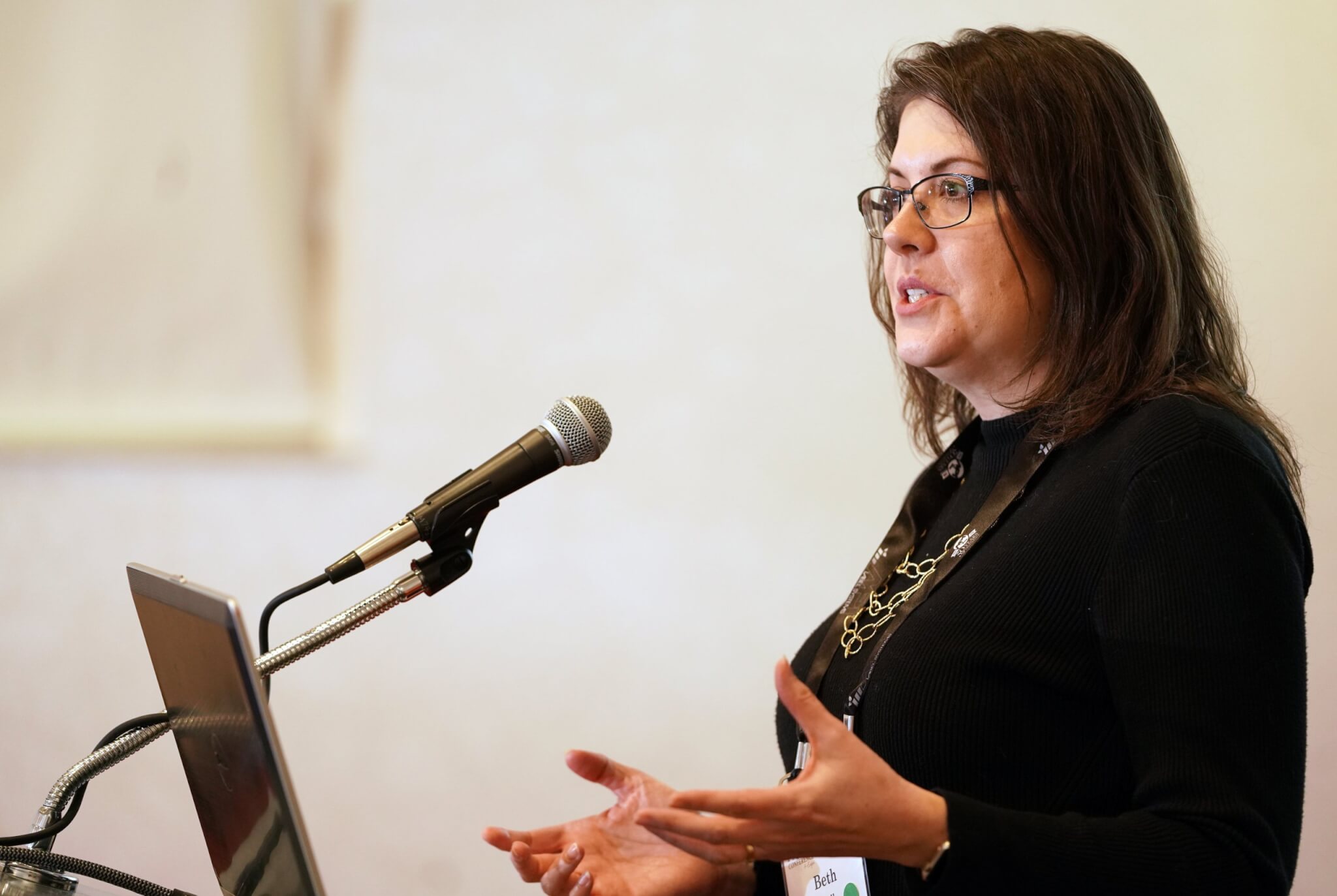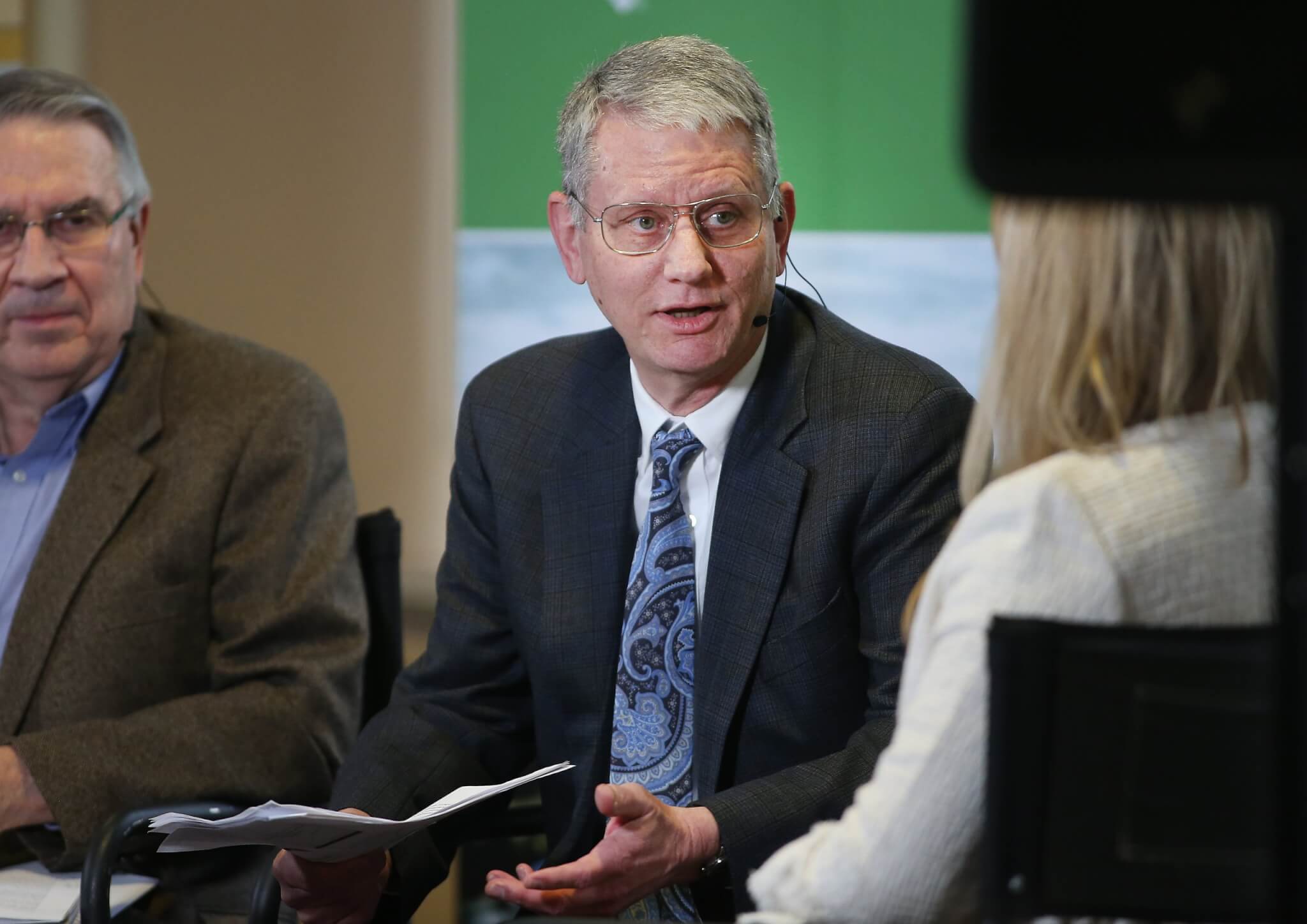Purdue Extension and United States Department of Agriculture (USDA) experts gathered virtually on Wednesday (Aug. 12) to discuss the results of the 2020 USDA crop report and the current status of Indiana’s major cash crops.
Karen Plaut, Glenn W. Sample Dean of Purdue Agriculture, convened the panel, which is traditionally held at the Indiana State Fair. Participants included Shaun Casteel, Purdue associate professor of agronomy and Extension soybean and small grains specialist; Bob Nielsen, Purdue professor of agronomy and Extension expert in Indiana’s corn management systems; Beth Hall, the Indiana state climatologist; Michael Langemeier and James Mintert, both professors of agricultural economics and Extension economist; and Marlo Johnson, regional director USDA, National Agricultural Statistics Service (NASS).

“This is forecasted to be the biggest soybean crop that we have ever had in Indiana at 61 bushels. This is over 15 percent above the yield trend,” said Casteel in response to the crop report. “2020 is shaping up to be a banner year with significant yields for soybeans.”
A dry and moderately temperature spring led to good planting conditions for farmers in Indiana. Despite a freeze event in early May, and dry conditions in June and July, Indiana’s major cash crops — corn and soybeans — are both projected to be above trend for bushels harvested this fall.

Soybean yield is projected to reach a record 61 bushels per acre compared to 51 bushels per acre in 2019. Forecasts call for 346.5 million bushels to be harvested in Indiana, up 27 percent compared to 273.4 million bushels harvested in 2019.
Corn forecasts expect a yield of 188 bushels per acre in Indiana, which is up from 169 bushels per acre in 2019. As of August 1, 67 percent of corn was rated good to excellent.

“All in all, the 2020 growing season has been more ‘normal’ than many recent years,” Nielsen said. “We are hopeful that we will have a good harvest season, which would be a welcome relief compared to the statewide late harvest last year.”
While harvest projections range from good to excellent, Purdue economists warn of troubles in the market. Soybean exports were down significantly in the 2019 crop year, and while the USDA is forecasting a 29 percent rebound in exports for the 2020 crop year, Mintert expressed concern about global economic growth and additional economic risk factors.

“Weak ethanol demand has been a problem for the corn market in 2020. This is largely a result from COVID-19 and the reduction of fuel usage and corn usage for ethanol. USDA is expecting ethanol production to rebound during the 2020 crop marketing year, but that will be dependent on how rapidly the economy recovers,” Mintert said.
The USDA August Crop Report is available at: https://release.nass.usda.gov/reports/crop0820.pdf.
The webinar recording can be viewed on Purdue’s Center for Commercial Agriculture website at https://purdue.edu/commercialag.






